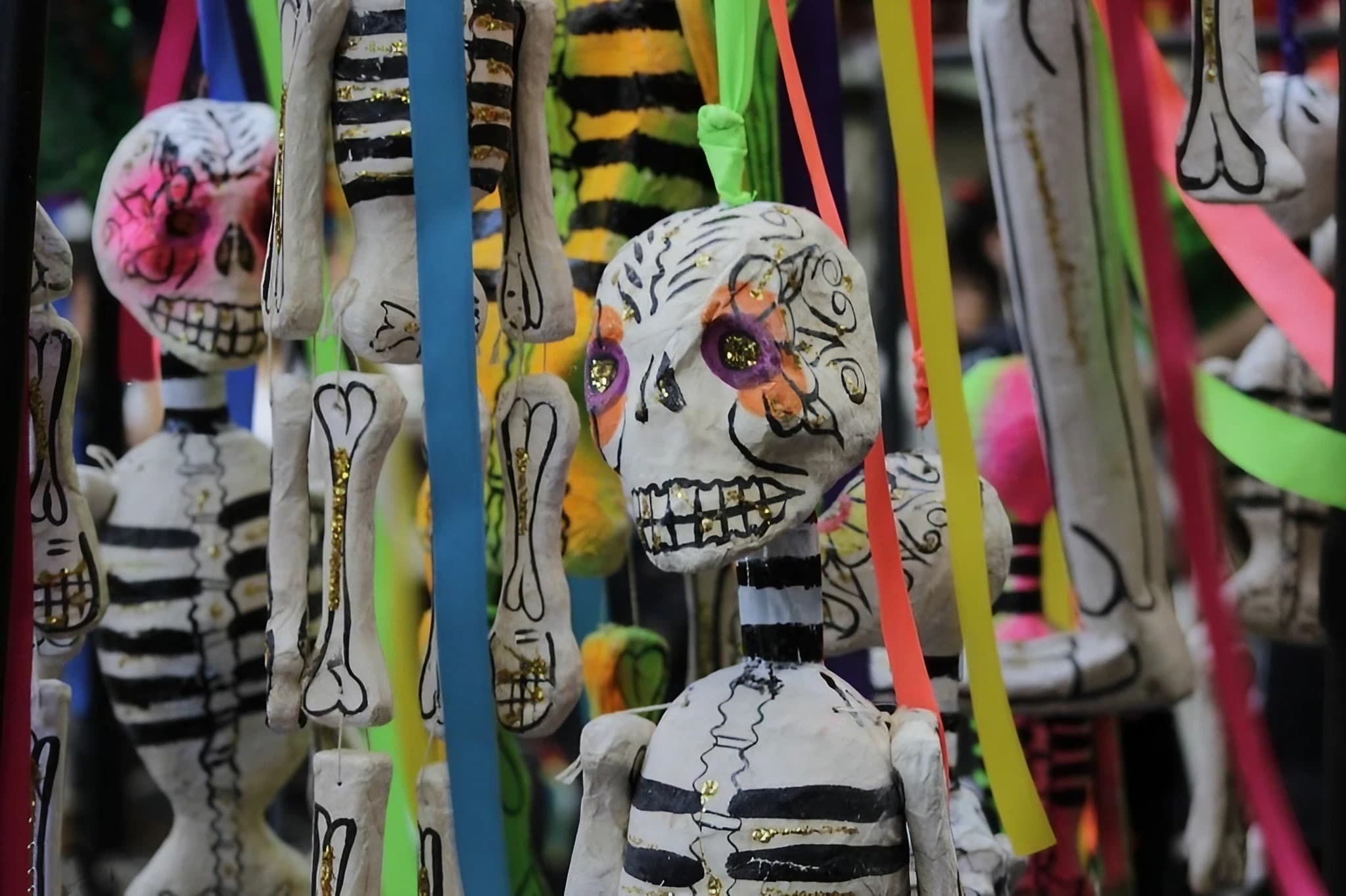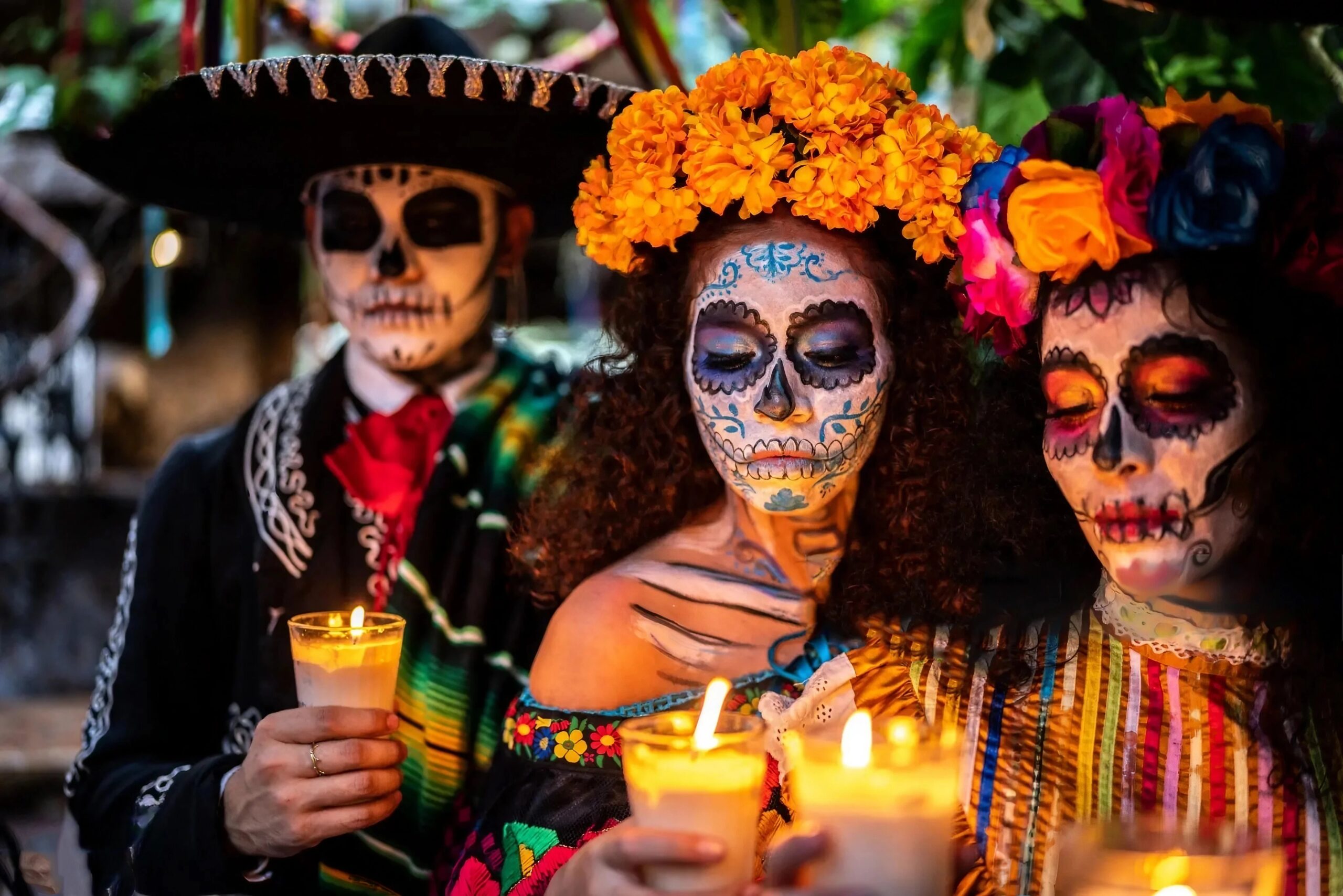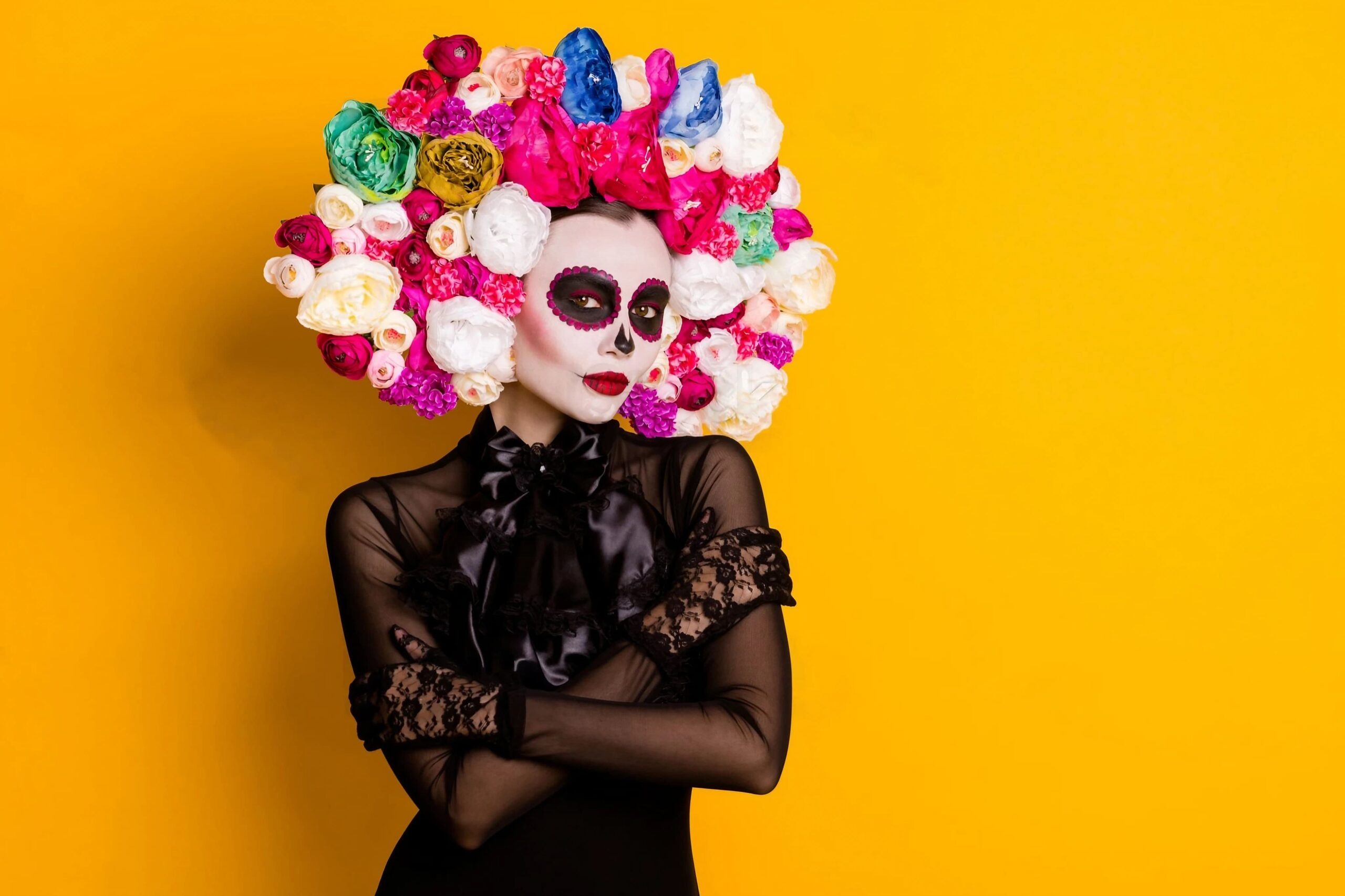
Embracing the Beauty and Meaning of El Día de los Muertos
Let’s explore the rich traditions and celebrations of El Día de los Muertos, also known as Day of the Dead. This vibrant and meaningful holiday holds a special place in Mexican culture and beyond, honoring and remembering loved ones who have passed away. In this article, we will delve into the origins, symbolism, and festivities of this remarkable celebration.
Join us as we uncover the beauty and significance of El Día de los Muertos and discover how you can embrace its spirit in your own Halloween celebrations.
Table of Contents
The Origins and Cultural Significance of El Día de los Muertos
History of the tradition and its indigenous roots
El Día de los Muertos has deep historical roots dating back thousands of years to indigenous cultures in Mexico, particularly the Aztecs and other Mesoamerican civilizations. The holiday originated as a harvest festival and evolved into a unique blend of pre-Columbian beliefs and Catholic traditions after the arrival of the Spanish conquistadors.
The ancient customs of honoring and celebrating the deceased were integrated with the Christian observances of All Saints’ Day and All Souls’ Day, which fall around the same time. This fusion of cultures created the vibrant and symbolic celebration of El Día de los Muertos as we know it today. Understanding the historical foundations of this holiday helps us appreciate the cultural richness and deep connections it represents.
Cultural Beliefs and Practices Associated with El Día de los Muertos
El Día de los Muertos is rooted in the belief that during this time, the souls of the departed return to the earthly realm to reunite with their loved ones. It is seen as a joyous occasion, a celebration of life and a way to honor and remember those who have passed away. Families and communities come together to create elaborate altars adorned with photographs, candles, marigolds, and the favorite foods and beverages of the deceased.
These altars, known as ofrendas, serve as a welcoming space for the spirits, providing a link between the living and the dead. With music, dance, and storytelling, El Día de los Muertos is a vibrant expression of love and remembrance, affirming the belief that death is a natural part of the human experience and that the departed continue to exist in spirit and memory.
The Connection Between Life, Death, and the Afterlife in Mexican Culture
El Día de los Muertos reflects a profound understanding and acceptance of the cycle of life, death, and the afterlife in Mexican culture. Rather than fearing death, this holiday embraces it as an integral part of the human journey. It is believed that during El Día de los Muertos, the spirits of departed loved ones return to be among the living once again.
This unique perspective on death fosters a deep sense of connection and reverence for ancestors and departed family members. It serves as a reminder to cherish life’s moments, honor the memories of those who came before, and celebrate the ongoing bond between the living and the dead.
El Día de los Muertos is a vibrant celebration that allows individuals and communities to embrace mortality, find comfort in remembrance, and celebrate the eternal presence of their loved ones.

Symbolism and Elements of El Día de los Muertos
The Importance of Altars and Ofrendas in El Día de los Muertos
Central to the celebration of El Día de los Muertos are the altars and ofrendas, which serve as sacred spaces to honor and remember the departed loved ones. These beautifully decorated altars are adorned with vibrant marigold flowers, known as cempasúchil, which are believed to guide the spirits back to the living world.
They are also adorned with photographs of the deceased, along with their favorite foods, beverages, and personal belongings. Candles are lit to provide a guiding light, and colorful papel picado (cut-paper banners) flutter in the breeze, adding to the festive atmosphere.
These altars and ofrendas create a tangible connection between the living and the dead, inviting the spirits to join the celebrations and ensuring that their memory is cherished and honored. Through the creation of these heartfelt tributes, El Día de los Muertos becomes a time of remembrance, love, and spiritual connection.
Iconic Symbols of El Día de los Muertos: Sugar Skulls, Marigolds, and Papel Picado
El Día de los Muertos is rich in symbolism, with several iconic elements that are closely associated with the holiday. Sugar skulls, known as calaveras, are intricately decorated skull-shaped candies or molded sugar sculptures. These colorful and ornate skulls are often inscribed with the names of the deceased and placed on altars as a sweet offering to the departed. Marigold flowers, or cempasúchil, play a significant role in the festivities.
Their vibrant yellow and orange hues are believed to attract and guide the spirits back to their loved ones. They are used to create elaborate flower arrangements, decorate altars, and adorn gravesites. Another notable symbol is papel picado, delicate tissue paper banners intricately cut with festive designs. These decorative banners add a touch of beauty and liveliness to the celebrations, swaying gently in the wind and creating a joyful ambiance.
These symbolic elements of El Día de los Muertos contribute to the visual richness and cultural significance of the holiday, embodying the spirit of remembrance and celebration.
The Role of Food in El Día de los Muertos: Pan de Muerto and Sugar Skulls
Food holds a special place in the celebration of El Día de los Muertos, as it is believed to nourish and satisfy the spirits who return during this time. One of the most iconic culinary treats associated with the holiday is pan de muerto, a sweet bread adorned with bone-shaped decorations. This delicious bread, often flavored with hints of orange zest or anise, is enjoyed by families as they gather to honor their departed loved ones. It is shared and offered to the spirits as a gesture of love and remembrance.
Another significant culinary symbol is the sugar skull. These intricately designed candies, often made from sugar or chocolate, are decorated with colorful icing and serve as both edible treats and artistic tributes to the deceased. They are often personalized with the names of loved ones and placed on altars or gravesites as a symbolic offering. Through these culinary traditions, El Día de los Muertos becomes a time for families to come together, share cherished meals, and keep the memory of their ancestors alive through the act of nourishment and celebration.
Celebrations and Traditions
How El Día de los Muertos is Celebrated in Mexico and Beyond
El Día de los Muertos is celebrated with great enthusiasm and fervor in Mexico, where it is recognized as a national holiday. Communities come together to create vibrant and elaborate displays of altars and ofrendas in homes, cemeteries, and public spaces. Families visit the graves of their loved ones, cleaning and decorating them with flowers, candles, and personal mementos. Parades and processions fill the streets with music, dance, and colorful costumes, showcasing the cultural vibrancy and joyful spirit of the holiday.
Beyond Mexico, El Día de los Muertos has gained recognition and popularity in many other parts of the world. It is celebrated in various communities and cities with Mexican diaspora, providing an opportunity for people of diverse backgrounds to learn about and participate in this beautiful tradition. The celebrations of El Día de los Muertos serve as a powerful reminder of the enduring connection between the living and the departed, fostering a sense of unity, love, and celebration of life.
Day of the Dead Costumes and Face Painting: Embracing the Spirit of the Celebration
One of the most captivating aspects of El Día de los Muertos is the array of vibrant costumes and intricate face painting that adorn celebrants during the festivities. Participants often dress in traditional attire, such as colorful embroidered garments and sombreros, or they may choose to wear elaborate skeleton costumes inspired by calacas and calaveras.
The makeup and face painting play a central role, with intricate skull designs and floral motifs adorning faces to honor the spirits and celebrate the cycle of life and death. It is a time when individuals of all ages can express their creativity and pay homage to the vibrant and joyous spirit of the holiday.
Whether participating in community events, parades, or private gatherings, the costumes and face painting of El Día de los Muertos add a touch of enchantment and unity to the celebrations, as people come together to embrace the essence of this special day.
The Significance of Day of the Dead Costumes and Face Painting
Day of the Dead costumes and face painting are not only visually stunning but also hold deep cultural and symbolic significance. The attire and makeup used during El Día de los Muertos pay homage to the spirits of the departed and celebrate the cycle of life and death. Traditional costumes often feature vivid colors, intricate designs, and symbols associated with the holiday, such as sugar skulls and marigolds. The skull makeup, known as “calavera” or “Catrina” makeup, is a prominent element, representing the joyful and festive spirit of the occasion.
By donning these costumes and adorning their faces with vibrant designs, individuals become part of a collective expression of love, remembrance, and cultural heritage. Day of the Dead costumes and face painting allow people to actively engage with the traditions and rituals of El Día de los Muertos, fostering a sense of unity and celebration across communities.

Day of the Dead Crafts and DIY Ideas
Creative Day of the Dead Crafts and DIY Ideas
Engaging in Day of the Dead crafts and do-it-yourself (DIY) projects is a wonderful way to connect with the spirit of the holiday and add a personal touch to your celebrations. There are numerous creative craft ideas that allow you to create your own Day of the Dead decorations and adornments. From crafting vibrant papel picado banners to designing intricate sugar skulls or creating decorative flower arrangements, the possibilities are endless.
These DIY projects provide an opportunity to express your creativity and pay homage to the cultural traditions of El Día de los Muertos. Whether you are experienced in crafting or a beginner, the satisfaction of creating your own Day of the Dead crafts adds a unique and personal element to your celebration, allowing you to immerse yourself in the beauty and symbolism of this cherished holiday.
Step-by-Step Guides for Making Sugar Skulls and Papel Picado
If you’re looking to dive into the world of Day of the Dead crafts, making sugar skulls and papel picado are two classic projects that you can try. Making sugar skulls involves molding and decorating sugar into intricate skull shapes, using royal icing and colorful embellishments.
It’s a delightful activity that allows you to create personalized sugar skulls to honor your loved ones. On the other hand, crafting papel picado involves cutting delicate designs into colorful tissue paper to create decorative banners. With step-by-step guides available, you can easily learn the techniques and create your own stunning papel picado pieces.
These hands-on projects not only let you express your creativity but also enable you to embrace the cultural traditions of El Día de los Muertos, creating beautiful and meaningful decorations to enhance your festive atmosphere.
Embracing Budget-Friendly Day of the Dead Costume Solutions
Creating your own Day of the Dead costume doesn’t have to break the bank. With a little creativity and resourcefulness, you can embrace the spirit of the holiday while staying within your budget. Consider repurposing clothing items you already have or visiting thrift stores to find unique pieces that can be transformed into a vibrant Day of the Dead ensemble.
Focus on incorporating key elements such as colorful patterns, floral accents, and skull motifs. DIY accessories like flower crowns, skeleton gloves, or handmade masks can add that extra touch to complete your look.
By embracing budget-friendly solutions and putting your own artistic twist on your costume, you can fully immerse yourself in the joyous and expressive nature of El Día de los Muertos without straining your wallet.
Day of the Dead and Halloween: Similarities and Differences
The Cultural Overlap: Day of the Dead and Halloween
While El Día de los Muertos and Halloween share similar dates and themes centered around death and the supernatural, they are distinct celebrations with unique cultural backgrounds. Halloween, with its origins in Celtic and Christian traditions, is widely celebrated in many parts of the world, emphasizing costumes, trick-or-treating, and spooky decorations.
On the other hand, El Día de los Muertos is deeply rooted in Mexican culture, blending indigenous customs with Catholic influences. It is a time to honor and remember deceased loved ones, celebrating their lives with colorful altars, vibrant costumes, and joyful gatherings.
While both holidays embrace the idea of acknowledging the supernatural and remembering the departed, they offer different perspectives and cultural expressions. Recognizing and appreciating these distinct traditions allows us to embrace the diversity of cultural practices and enrich our understanding of global celebrations.
Embracing Cultural Heritage: Understanding the Unique Roots of El Día de los Muertos
El Día de los Muertos and Halloween may share certain themes and symbols, but their origins and cultural roots are distinct. El Día de los Muertos has deep historical ties to indigenous Mexican cultures, such as the Aztec civilization and their reverence for ancestors and the cycle of life and death.
It incorporates elements of pre-Columbian beliefs and rituals, blending them with Catholic traditions brought by the Spanish conquistadors. Halloween, on the other hand, traces its roots to the Celtic festival of Samhain, marking the end of the harvest season. While both celebrations acknowledge the supernatural and the spirits, El Día de los Muertos is deeply rooted in Mexican cultural heritage, reflecting the values, beliefs, and practices unique to that region.
Understanding the unique roots of El Día de los Muertos allows us to appreciate and respect the significance of this beautiful tradition, embracing the diverse cultural heritage that enriches our world.
Conclusion
Embracing the Beauty of El Día de los Muertos: A Time for Remembrance and Celebration
As we conclude our exploration of El Día de los Muertos, we are reminded of the profound beauty and significance of this extraordinary holiday. It is a time when communities come together to honor and remember their departed loved ones, celebrating their lives with joy, love, and reverence. El Día de los Muertos invites us to reflect on the cycle of life and death, embracing the belief that our connections with those who have passed away endure beyond the physical realm. It is a celebration that encourages us to cherish the memories of our ancestors and to pass down their stories and traditions to future generations.
Through the vibrant altars, intricate artwork, and heartfelt celebrations, El Día de los Muertos serves as a powerful reminder of the interconnectedness of life, death, and the enduring power of love. Let us embrace the beauty of this cultural heritage and carry its spirit in our hearts as we honor the departed and celebrate the richness of life itself.
Keeping the Spirit of El Día de los Muertos Alive
While El Día de los Muertos may be celebrated on specific dates, its spirit and essence can be embraced throughout the year. We can keep the spirit of this beautiful holiday alive by integrating its values and practices into our lives. We can cultivate a deeper appreciation for our ancestors and departed loved ones, honoring their memory through personal rituals, storytelling, or visiting their final resting places. We can also engage in acts of remembrance and gratitude, reflecting on the lessons they imparted and the love they shared. Additionally, we can explore and support local Mexican communities and cultural organizations that preserve and promote the traditions of El Día de los Muertos.
By embracing the spirit of El Día de los Muertos in our daily lives, we carry forward the legacy of this remarkable celebration, fostering a sense of connection, love, and reverence for life, death, and the enduring power of our shared humanity.
Celebrating El Día de los Muertos: Embrace the Traditions and Create Lasting Memories
As we conclude our journey through the traditions and celebrations of El Día de los Muertos, we invite you to embrace this beautiful holiday and create your own meaningful experiences. Whether you have Mexican heritage or are simply captivated by the richness of this cultural celebration, there are many ways to partake in the festivities. Consider attending local Day of the Dead events, where you can witness vibrant parades, visit community altars, and enjoy traditional music and dance. Engage in crafts and activities that allow you to create your own altars, sugar skulls, or papel picado, infusing your personal touch into the traditions. Take the time to learn about the stories and legends associated with El Día de los Muertos, deepening your understanding and connection to this remarkable holiday.
By celebrating El Día de los Muertos, you not only honor the traditions of a beautiful culture but also create lasting memories and a profound appreciation for the interconnectedness of life, death, and the enduring power of love.
Join the Horrifiq cult and never miss a scare!
Latest Halloween trends, goriest new items, Halloween sales, right in your inbox.